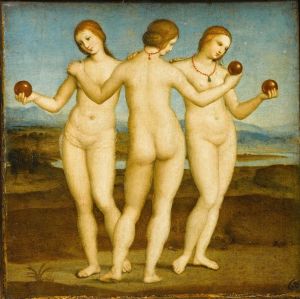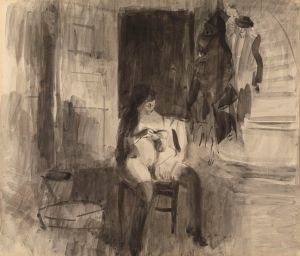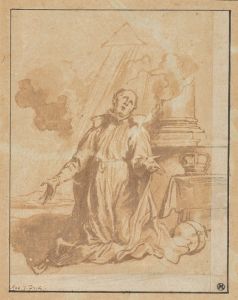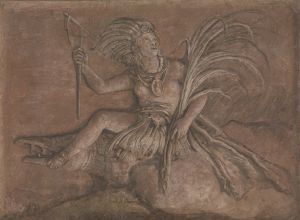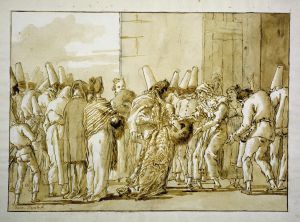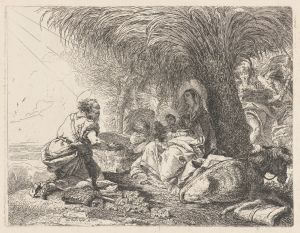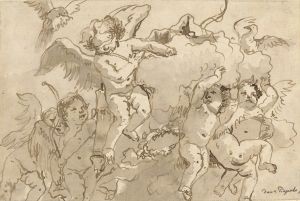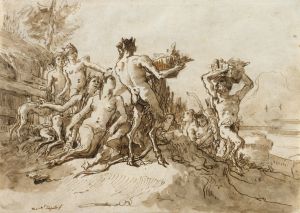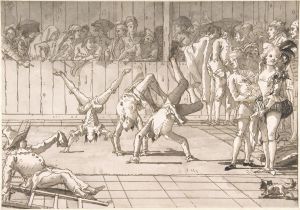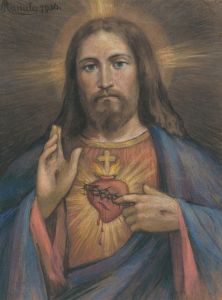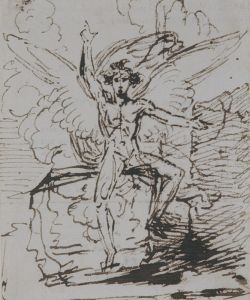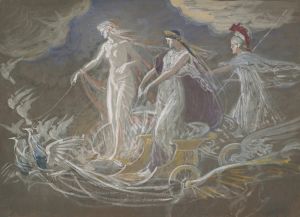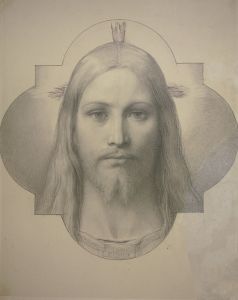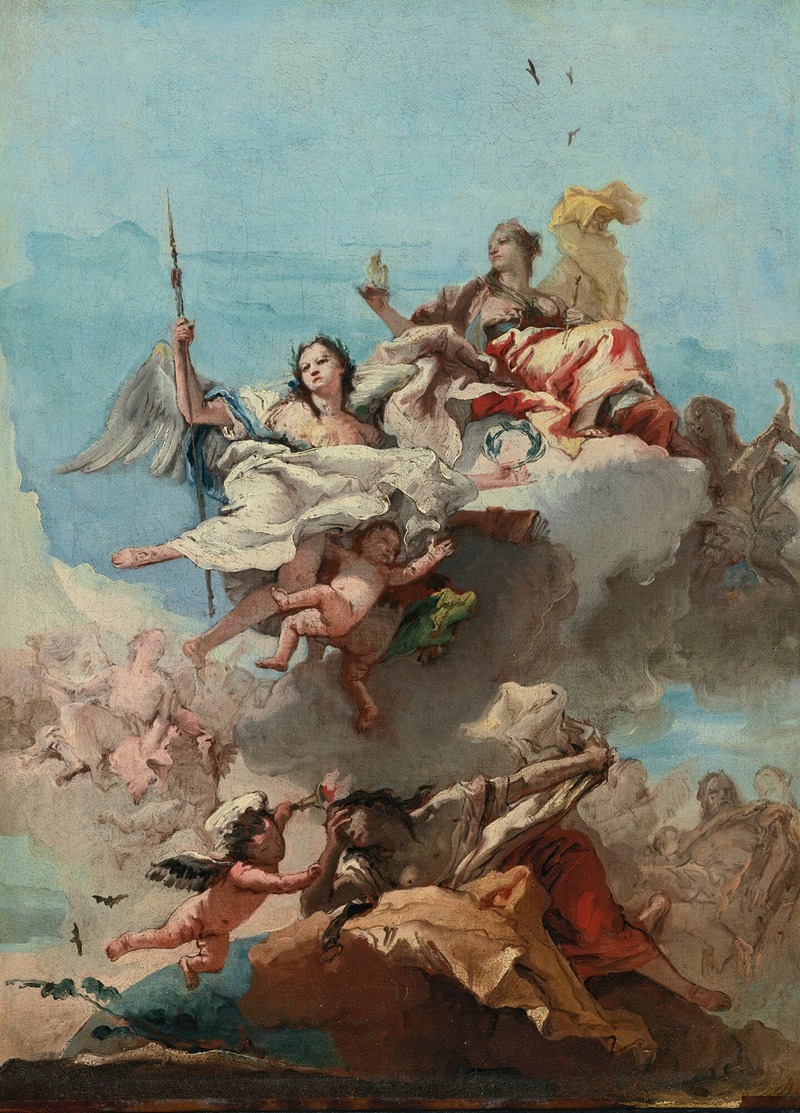
Triumph Of Virtue
A hand-painted replica of Giovanni Domenico Tiepolo’s masterpiece Triumph Of Virtue, meticulously crafted by professional artists to capture the true essence of the original. Each piece is created with museum-quality canvas and rare mineral pigments, carefully painted by experienced artists with delicate brushstrokes and rich, layered colors to perfectly recreate the texture of the original artwork. Unlike machine-printed reproductions, this hand-painted version brings the painting to life, infused with the artist’s emotions and skill in every stroke. Whether for personal collection or home decoration, it instantly elevates the artistic atmosphere of any space.
Giovanni Domenico Tiepolo, an Italian painter and printmaker, was a prominent figure in the 18th-century Venetian art scene. He was the son of the renowned painter Giovanni Battista Tiepolo and followed in his father's footsteps, developing a distinctive style that combined elements of the Rococo and Neoclassical movements. One of his notable works is "Triumph of Virtue," a painting that exemplifies his artistic prowess and thematic interests.
"Triumph of Virtue" is a fresco that was created in the latter part of Giovanni Domenico Tiepolo's career. The painting is part of a series of works that Tiepolo produced for the Villa Valmarana ai Nani, located near Vicenza, Italy. This villa is famous for its extensive fresco decorations, which were commissioned by the Valmarana family. The frescoes in the villa are divided into two main sections: those painted by Giovanni Battista Tiepolo and those by his son, Giovanni Domenico.
The "Triumph of Virtue" fresco is situated in the guesthouse of the villa, which was decorated entirely by Giovanni Domenico. This particular work reflects the artist's interest in allegorical themes, a common subject in the art of the period. The painting depicts an allegorical scene where Virtue is personified and celebrated, often shown triumphing over Vice or other negative forces. This theme was popular in the 18th century, reflecting the Enlightenment ideals of reason, morality, and the triumph of good over evil.
Giovanni Domenico Tiepolo's style in "Triumph of Virtue" is characterized by his use of vibrant colors, dynamic compositions, and expressive figures. His work often includes a sense of movement and drama, achieved through the use of flowing drapery and animated poses. The frescoes in the Villa Valmarana ai Nani, including "Triumph of Virtue," demonstrate his ability to create complex, multi-figure compositions that are both visually engaging and thematically rich.
The frescoes at Villa Valmarana ai Nani, including "Triumph of Virtue," are considered significant examples of 18th-century Venetian art. They showcase the transition from the Rococo style, with its emphasis on decorative elegance and lightness, to the more restrained and structured approach of Neoclassicism. Giovanni Domenico Tiepolo's work in the villa reflects this stylistic evolution, as he incorporates elements of both movements into his compositions.
In addition to his work as a painter, Giovanni Domenico Tiepolo was also a skilled printmaker. His etchings and drawings further demonstrate his interest in allegory and narrative, often exploring themes similar to those found in his frescoes. Throughout his career, Tiepolo remained committed to exploring the complexities of human virtue and vice, using his art to convey moral and philosophical messages.
The "Triumph of Virtue" fresco, along with the other works at Villa Valmarana ai Nani, remains an important part of Giovanni Domenico Tiepolo's artistic legacy. These works continue to be studied and admired for their technical skill, thematic depth, and contribution to the development of Venetian art in the 18th century. Visitors to the villa can still view these frescoes today, experiencing firsthand the vibrant colors and dynamic compositions that characterize Tiepolo's work.





